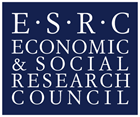Optimal Categorisation: the origin and nature of gender from a psycholinguistic perspective
Project Overview
Project
Optimal Categorisation: the origin and nature of gender from a psycholinguistic perspective
Project members:
Prof. Greville G Corbett
Dr. Alexandra Grandison
Dr. Mike Franjieh
Consultants:
Dr. Isabelle Bril (Paris, CNRS)
Dr. Anne-Laure Dotte (New Caledonia)
Dr. Sonja Eisenbeiss (Cologne)
Prof. Sebastian Fedden (Paris, Sorbonne)
Dr. Eleanor Ridge (Massey University)
Stakeholders:
Prof. Robert Early (Vanuatu, USP)
Helen Tamtam (Vanuatu, CDU)
Albert Sio (New Caledonia)
Period of award
1 September 2018 - 31 August 2023
Funder:
ESRC
The very existence of gender is a source of bafflement: why in Russian is 'elbow' masculine, while 'knee' is neuter and 'bone' is feminine? Why do some Dutch speakers distinguish three genders, and others only two? It challenges language learners and excites linguists and psychologists no less. The origin of grammatical gender is a major question in linguistics, and the related issue of how entities are categorised by speakers of different languages is a key question in psychology.
The remarkable properties of these systems pose intriguing questions about the origin and nature of gender. How do such systems arise, and what is their impact on the speakers to whom they are native? And most pertinently, why do such different methods of categorisation exist?
This proposal addresses key questions about the origin and nature of gender: where these perplexing systems come from; how they impact cognition; and whether certain systems are more optimal than others (for simplicity and informativeness).
We hypothesise that gender can develop from ‘classifiers’; in the clearest cases, classifiers are separate words used to classify nouns, akin to English sheet of paper vs. pack of paper. Speakers use different classifiers depending on the shape, size or use of the referent, e.g. ‘animal kangaroo’ (alive) vs. ‘meat kangaroo’, a clearly useful distinction. But if we can indeed demonstrate the rise of gender from classifiers, experimentally, a harder question arises: Why would languages relinquish a semantically transparent and useful system of classifiers in favour of a rigid and apparently unmotivated grammatical gender system? In other words, is gender the most optimal system of categorisation?
We have identified a sample of six related languages, whose unique possessive classifier systems exhibit the wide array of variation necessary for investigating the emergence of gender in language and the interaction of gender with cognition. This ‘natural laboratory’ consists of Oceanic languages spoken in Vanuatu and New Caledonia. This geographic area shows staggering variation in the number and type of classifiers found (from two to 23).
In Oceanic languages a noun can occur with different classifiers (termed ‘overlap’) depending on which function or property of the noun the speaker wishes to highlight. For instance, Lewo (a Vanuatu language) has three classifiers, for ‘drinkable’, ‘edible’ and ‘general’. The noun wi ‘water’ can occur with the drinkable classifier (2a) and with the general classifier (2b):
| (2) a | ma-na | wi | b. | sa-na | wi | ||
| CL.DRINK-3SG | water | CL.GEN-3SG | water | ||||
| 'her water (for drinking)' | 'her water (for washing)' | (Early 1994:216) | |||||
However, in North Ambrym (a Vanuatu language), which exhibits a much stricter link than Lewo between noun and classifier, we ‘water’ can occur with only one classifier (the one for drinkable entities), whatever the intended use of the water:
| (3) a | ma-n | we | b. | *mwena-n | we | |
| CL.DRINK-3SG | water | CL.GEN-3SG | water | |||
| 'his/her water (for any purpose)' | [not possible] | (Franjieh 2016:95) | ||||
Once a given classifier is obligatory, this “classifier” system looks remarkably like a gender system; we ‘water’ takes ma ‘drinkable’ rather as French chaise ‘chair’ requires the feminine article la. These examples in North Ambrym and French adhere to Corbett & Fedden’s Canonical Gender Principle, in that each noun has only one gender value (2016:503).
We hypothesise that a typical gender system, which categorises partially arbitrary sets of semantic domains, requires a greater cognitive load to process as opposed to a typical classifier system, which classifies simple and transparent semantic domains. These crucial examples from Vanuatu demonstrate that the semantic mapping of categories onto classifiers is not straightforward, and therefore provide a unique opportunity to compare across systems to reveal their relative optimality.
The project will give insight into the way in which humans categorise entities in the world, and how this categorisation is incorporated into the workings of language. These two aspects of our research provide a rare opportunity to investigate how the mind codifies human experience. We have developed an innovative method for investigating how grammatical categories like gender come to exist. By bringing psycholinguistic experiments to a natural laboratory, we can test hypotheses that would otherwise be out of reach.


